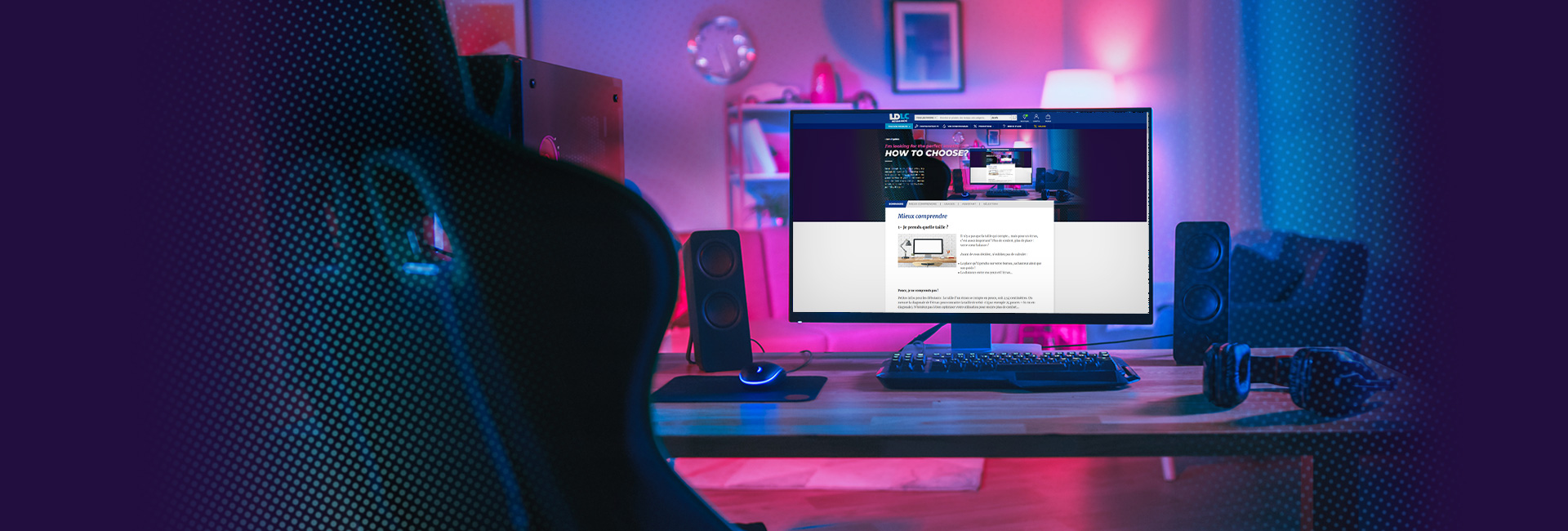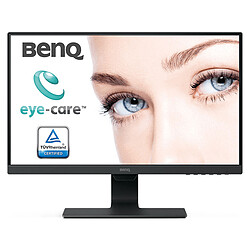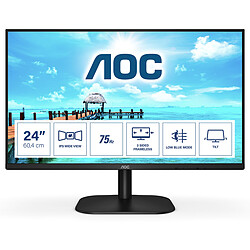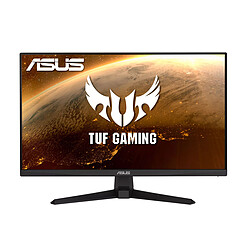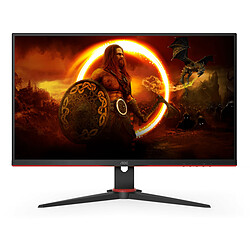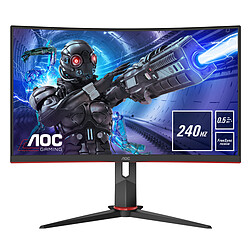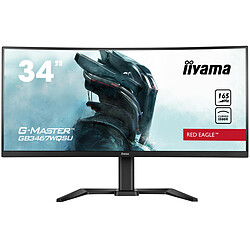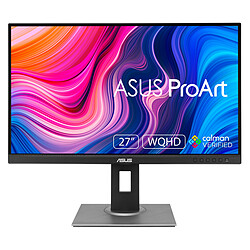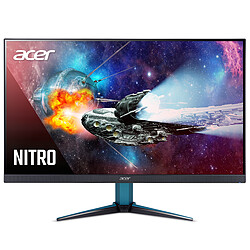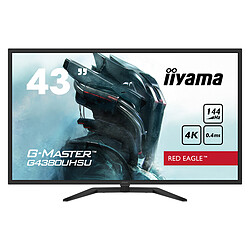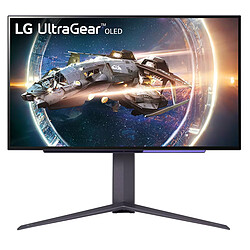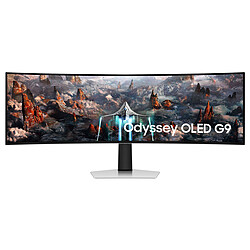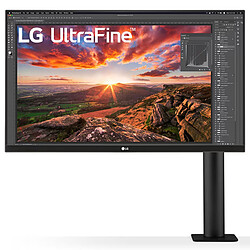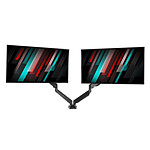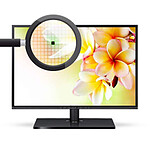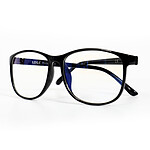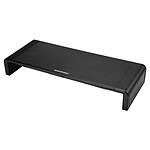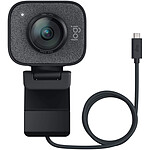Good to know
1- What size should I take?
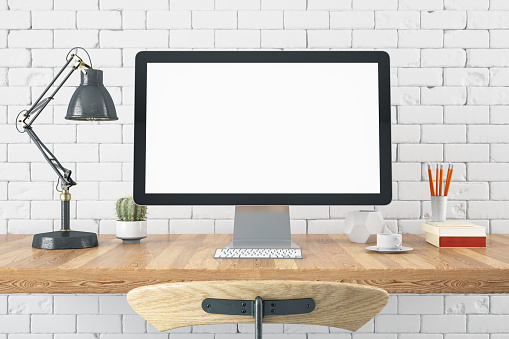
It's not just the size that counts... but for a monitor, it's quite important! More comfort, more space: you are hesitating?
Before you decide, don't forget to calculate:
- The space it will take on your desk, its height and its weight!
- The distance between your eyes and the display...
Inch... What?
PA kind information for beginners: the size of a monitor is measured in inches, i.e., 2.54 centimetres. We measure the display diagonal to find out its size (for example 24 inches = 61 cm diagonal). Do not hesitate to optimise your use for even more comfort…
- Between 15” et 19 ”: the very small, it's ideal for being plugged in anywhere (shop, surveillance, etc.). And it's even more practical if it's touch-sensitive!
- Between 20” et 27”: the versatile, it's perfect for your office and easier to find.
- 28” and more: you play, or you want to turn your monitor into a TV? The immersion will be total!
And what about the pixels?
Pixels are the dots that make up your monitor. The bigger your monitor, the more pixels it needs. The sharper it is, the more pixels it has! This is called its definition. Similarly, the smaller the pixels, the sharper the image: this is called its resolution..
And the format thing...?
The format represents the shape of your monitor: square, rectangle, triangle (oops sorry, that one doesn't exist 😉). Whether it's for your movies or working with several monitors, the format allows you many possibilities! From the historical "4/3" of the cathode-ray monitor, through the slightly wider 5/4, the 4/3 of the 2000s close to the 16/9 of HD TV (1920 x 1024 pixels), or the new formats for splitting your monitor in two or immersing yourself in the game with an incurved monitor such as the 21/9… It's up to you to choose the most common (and therefore cheaper) formats or those best suited to your use!
Make a good resolution!
Yes, resolution is important, and even more for a TV: close-up viewing, more accessible 4K video sources, optimisation of graphics power... A PC monitor is the ideal home for Very High Definition (even if we should say Very High Resolution, but whatever).
It's all about the choice: cheaper, sharper, better looking? You should know that 4K, also called Ultra HD (3840 x 2160 pixels), offers over 8 million pixels, 4 times better than the Full HD (1920 x 1080). However…
- Beware: despite automatic adjustment, a very high resolution on a small monitor will not only be useless, but also unpleasant, because the display will be very small! You just want to surf and read? Skip it!
- Make sure you've got the hardware before you splurge: the right HDMI cable, graphics card... and it's the 4K monitor of your dreams!
- The higher the resolution, the more expensive your monitor! However, a very large monitor with a low resolution will look rather disappointing. Be ba-lan-ced!
2- Comfort above all!
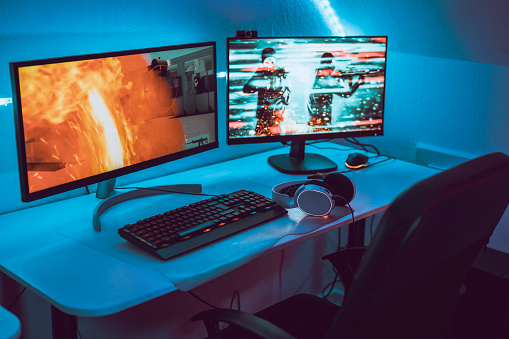
Technology is good... but being comfortable is better! When choosing a good monitor, don't forget the way you work, play, your environment... in short, your needs! Because for you, "options" are not always options... and their absence could make your experience harder...
-
Brightness:
The brightness of a monitor is often between 250 and 400 cd/m², while a small conventional light bulb is about 120 cd/m². If you are working in a bright room, it is essential to choose a matt or anti-glare panel pour encore plus de confort en pleine lumière.
-
Contrast:
Contrast represents the depth of black and the intensity of colour: you will have true black from 1000:1, but these figures can now shoot up. Beware that artificially created "dynamic contrast" will always be less effective than true native contrast.
-
Response time:
A fantasy for all gamers, less is better! The less demanding can however get by with 6 ms (milliseconds)... First calculated from "black to black", manufacturers are counting more and more from "grey to grey", giving the illusion of better figures...
-
Hertz (Hz) :
The display frequency is counted in Hertz and allows a better display fluidity. Most screens are 50/60 Hz... However, if you want to try active 3D (which halves your display frequency), aim for a 120 or 144 Hz screen (60 Hz per eye, or even 72 Hz), or even 240 Hz for hyper-realistic displays in high-flying gaming!
-
Viewing angles:
Have you ever had screens that look great from the front, but change colour as soon as you look at them sideways? Well, that's a problem! Of course, if you're going to share your screen or not necessarily going to face it ... make sure you have good viewing angles!
-
Adjustable height, width, pivot... :
We don't think about it enough, but an adjustable stand is a real plus if you intend to stay in front of your screen for a long time. To avoid having a sore neck and without having to raise your monitor with piles of books, it's THE practical solution that doesn't look like much!
-
Reading filters :
Anti-blue light filter, automatic brightness adjustment... if you are sensitive to light and are a night owl, don't hesitate to take care of your eyes! Manufacturers always try to find THE little innovation that will allow you to work in greater comfort... even if it is not always relevant!
-
Flicker Free :
The display of your screen flickers, even if you don't see it (if you take a picture of your scree... you'll see it right away!). To avoid tiring your eyes and for a better fluidity, the Flicker-Free sends continuous power... No more flickering effect!
-
G-Sync/Free-Sync :
Designed for the most demanding gamers, these technologies allow you to synchronise your screen/graphic card frequencies, avoiding tearing, latency... and your game will be sharper and smoother with the right monitors and cards.
It's up to you!
3 - A display for every purpose

Underneath its transparent panel lies a technological heart that is just waiting to satisfy you. But how do you choose the ideal display for your use? Here's a quick sum up.
TFT : THE CHOICE
TFT displays have liquid crystals that change orientation according to power... Here are the different technologies used:
- TN, « Twisted Nemastics » : the retro-hardcore gamer
+ Very fast display, ideal for gaming
- Poor contrast and viewing angles
- IPS, « In-Plane Switching » : the image lover
+ Excellent viewing angles, deep and beautiful colours
- Limited contrast, lower response time
- VA “Vertical Alignment” : versatility
+ Excellent contrast, good response time
- Slightly slower than TN, less immersive colours and worse viewing angles than IPS
- QLED « Quantum-dot Light Emitting Diode » : the innovation
Nothing to do with OLED despite the name; it is a VA panel improved by Samsung.
+ Beautiful colours, good brightness, durability, less energy, good response time
- Average viewing angles
OLED: THE LUXURY
OLED is a different technology from TFT, allowing its pixels to be completely extinguished by an organic electroluminescent compound. And it meets many needs...
+ Deep blacks, amazing contrast, good viewing angles, good response time
- Expensive, deteriorates more easily over time
I just want to...
Surf online or work!

Are you an office-intensive person? Aim for a 22-inch Full HD, with a TN or IPS panel. For the format, think multi-screen with a 21:9 format, or 16:9 if that's enough for you. For your comfort, consider a height-adjustable screen with a swivel, Flicker-Free technology to rest your eyes and, a little extra, a blue light filter!
A quick note: don't forget the built-in speakers!
Our selection ›
Play!
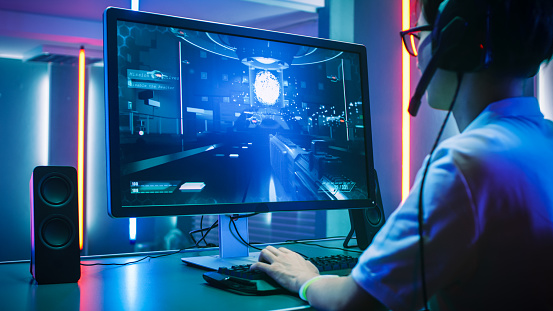
More immersion, more sensation: go for a big enough screen (minimum 24 inches), Full HD or more, and compatible with your graphics card! The format may allow you to experience more emotion: dive into the Game with a 32:9, more reasonable prices with a 21:9, or more restraint with a simple 16:9? It's up to you! For even more fluidity, go for a maximum response time of 2 ms (grey to grey), a frequency of 100 Hz and of course, the essential, G-Sync or Free Sync! For the panel, choose IPS or VA.
Our selection ›
Watch my best movies...
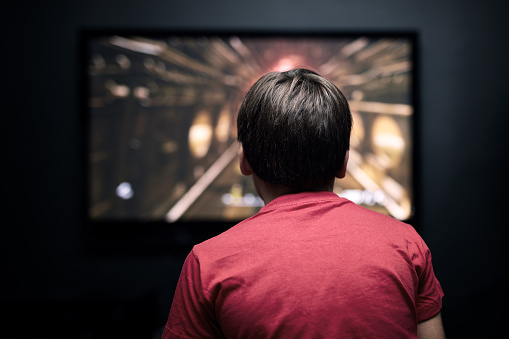
Turn your screen into a TV by choosing a very large format (27 inches minimum in 16/9), and why not 4K? This time, also watch your viewing angles and brightness (you can go up to 400 cd/m²) for perfect use from long distances or in broad daylight... As for the panel, IPS, QLED or OLED are appropriate. Of course, adjustment options such as the pivot are essential for even more versatility!
A quick note: pay attention to your connectivity, such as Display Port, HDMI, VGA, etc.
Our selection ›
Edit images

Graphic design is your passion... or maybe, your livelihood? Then make sure you get the best! To avoid squinting at the screen, aim for a minimum of 24 inches, ranging from Full HD to 4K. For the panel, depending on your preferences: IPS or VA, QLED and even OLED, in a 16/9 format! The essential options are the adjustment/pivot, the great colourimetry offered and... a matt panel, to avoid reflections!
A quick note: improve your comfort with a visor, and your accuracy with a colorimetric probe!
Our selection ›
If we often spend choosing a computer, whether it is a laptop or a desktop, the purchase of a PC monitor should also be considered in relation to your use. Over the years, references have multiplied to meet the needs of all types of users in an ever more precise manner. With the LDLC 2021's special PC monitor buying guide, find the monitor best suited to your profile and equip yourself with the best brands! Discover a complete selection of the best screens for gaming as well as a great choice of PC monitors under 100 euros perfect for remote working.
2021 PC monitor guide: the right choice by use
For office tasks and multimedia: If your activities are limited to viewing web pages, word processing or editing spreadsheets, a 22-inch PC monitor will offer you a versatile way to work at home. The type of panel is not important here, but you should buy a monitor with a blue light filter for an office use. This technology allows for comfortable viewing and avoids eye strain. To increase productivity, go for a dual screen installation which will significantly increase the display surface and limit the manipulation of your windows and applications. Budget: between 70 and 250 euros.
For gaming and competitive video games: FPS and Battle Royale fans, you will need a gamer screen capable of processing images quickly to gain in fluidity. While a minimum size of 24" is recommended, response time and screen frequency are the two main criteria to consider when choosing a gamer monitor as they will have a real impact on your in-game responsiveness. Go for a response time of less than 5ms and a frequency of over 100Hz. Check the frequency capability of your console if you are specifically looking for a PC monitor for console gaming. Budget : from 150 to 2,000 euros.
For photo editing and graphic arts: If you are looking for a Graphic designer PC monitor, you should focus on image quality, colour rendering and contrast. Here, you need to pay attention to the panel and the resolution of the screen. If the IPS and 4K panel combination is the best in terms of screens for photography, their price is not within the reach of everyone. You can save several dozen euros by opting for a screen with a lower resolution in 2K or in Full HD. Budget : from 300 to 3,000 euros.
Should you fall for a curved PC monitor in 2021?
Released in 2014, the first curved monitors surprised people with their out-of-the-box format. This innovation, which may have been considered as a gimmick at first, has now become standard and is used in many displays. The curvature of a curved screen creates a slight distortion of the image that keeps it at an equal viewing distance. In use, a curved screen is therefore more comfortable to use and more immersive for gaming purposes. However, they are more expensive to produce and are therefore more expensive than conventional monitors for the same performance. For a better experience, you should buy a large curved monitor (from 34'').
UltraWide in 2021 : who is this format for?
These XXL diagonal screens, which can do everything, are available to suit all types of activity, with the advantage of the 21:9 format, which offers 33% more display area than a 16:9. This cinema-like format is therefore ideal for watching movies. No more black bars, your film will be displayed on the whole screen! The UltraWide can also replace a dual screen and makes multitasking easier for office use. Videographers will appreciate the extra space for a better view of their timeline or a creative project. Finally, there are UltraWide monitors for gaming at 144Hz that will give you an exceptional field of view without compromising on responsiveness. Looking for the ultimate in immersion? Go for a 34-inch 21:9 curved screen! LDLC.com offers you the best and the must-have of the PC monitors for less than 400 euros with our Fox Spirit PGM340 screen!


